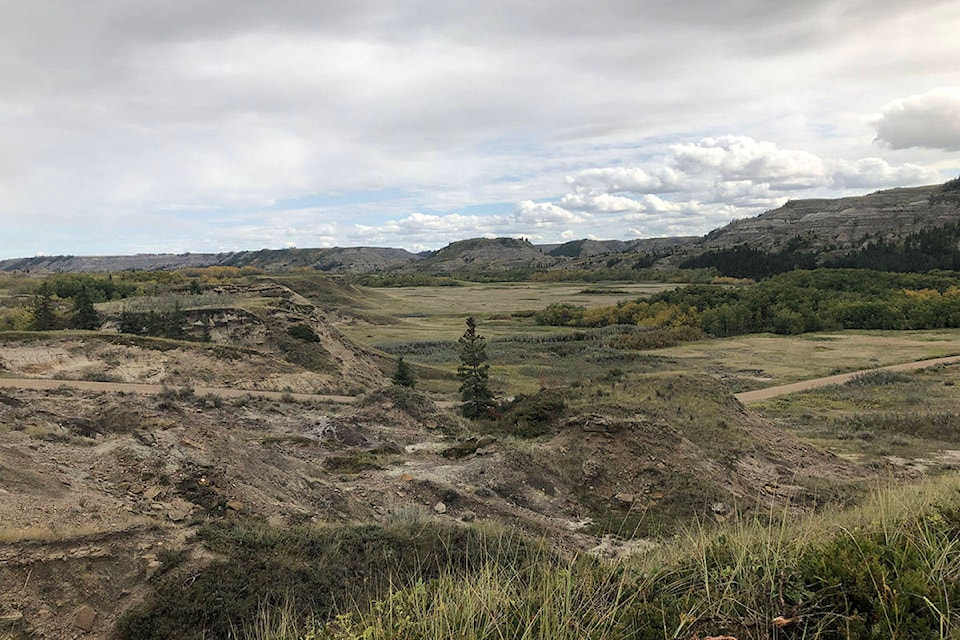The Parkland region is the most settled region in Alberta. The land has been used extensively for agriculture purposes since the late 1800s. This region is also the least environmentally protected region in the province.
On Sept. 15, the government announced $43 million dollars will go to provincial parks to update and repair facilities. This announcement follows a government decision to remove over 164 park sites from the provincial park system back in March. The province has no plans to reverse the removal of those 164 parks from the parks system – despite recent surges in park usage – and environmentalists are concerned.
Grace Wark, a conservation specialist from the Alberta Wilderness Association (AWA), is perplexed how and why this decision was made.
“There’s been a real lack of transparency and a lack of justification behind this decision. We still haven’t seen the usage numbers come out of these park sites. We still haven’t seen the assessment that all of these sites went through in order to determine, ‘Ok, these 164 sites are not being used enough. We don’t consider them in having strong enough conservation value, that’s why we are taking them out of the system,’” said Wark. “We haven’t seen the data backing that up.”
In a February press release, the government stated they had assessed the sites and the ones chosen for removal were small and under-utilized. But things changed this summer with lockdowns, the inability to travel outside of the province and a need to social distance.
“It’s especially curious right now because our park system has been flooded with use this past summer so it’s really telling a different story than the one that we’ve heard out of our government to justify these park cuts and to remove these sites from the system,” Wark said.
The Central Parkland Natural Subregion stretches from Calgary to Edmonton and east to the Alberta-Saskatchewan border. There are three Parkland regions in Alberta and the Central Parkland subregion is 88 per cent of the Parkland region mass and covers an area of 53,706 km2.
There are 13 sites set to be removed from the Parkland region and two of them are in the Lacombe district: JJ Collett and the Narrows.
“The Parkland is the least protected natural region in Alberta. Only 0.9 per cent of its entire land base is protected. That’s why losing these sites is particularly impactful for this region,” Wark said.
It is estimated that only five per cent of the natural vegetation remains in the area, according to an Alberta Parks document. This is because it is the most densely populated and the most productive agricultural subregion in the province.
At a press conference on Sept. 15, Minister for Alberta Parks and Environment, Jason Nixon, said the parks will remain open and protected for Albertans.
“Delisting a provincial park from the provincial park system is not closing the park,” said Nixon. “The reality is the majority of our special places inside this province are actually protected and managed through the Public Lands division of Alberta Environment and Parks and the smaller amount is actually managed through the park system.”
In their assessment of parks sites the government has said the 164 sites are “proposed for partnerships.” The Optimizing Alberta Parks webpage said these changes would account for less than one per cent of the land base and would not impact areas managed for conservation.
There were 17 additional campsites that were to be closed or partially closed this summer, but those plans were put on hold because of how busy the parks were this summer. Those parks are now being transferred to the public lands division for better management.
“It’s a three hour round trip for provincial park officers to get there to manage that campground and meanwhile the whole area around it is protected underneath the public lands system and is managed by our public lands officers and in some cases, it makes more sense for us to be able to use those officers to manage that system going forward,” said Nixon.
“At the end of the day though these facilities are not closing they remain protected, they remain open to Albertan’s to utilize.”
Wark said having these parks under the Provincial Park Act helps to protect them.
“What these parks are able to do is help to prevent the conversion of native Parkland landscapes into other land uses and that’s something that is really important under our Provincial Park Act and under having “parks” status,” said Wark. “Hopefully that’s something that we’d be able to retain instead of stripping away with a decision like this.”
Even though these sites are small they are still important to wildlife for stopover habitat and connectivity, Wark added.
“The Parkland is an endangered landscape,” she said. “Essentially, we’re losing what makes the Parkland so distinctive and so special… our Parkland deserves more protection into the future, so we should really be strengthening that protected network.”
